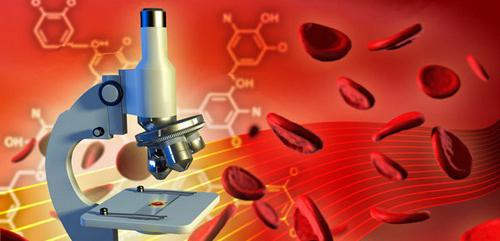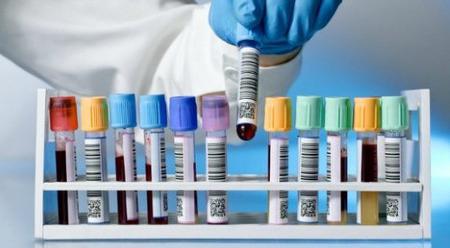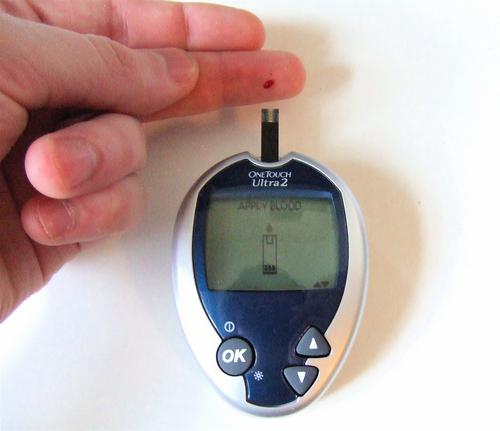When we take the test in the laboratory, we receive a form with the results. The results may depend on many factors: in which laboratory the analysis was taken, on the equipment in the laboratory, methods of analysis, age and gender, as well as other factors are taken into account.
Some test results give a simple yes or no answer (positive or negative). For example, a pregnancy test determines the presence or absence of the hCG hormone in the urine, and an analysis for antibodies to any infection determines their absence or presence in the body. This type of research is called qualitative.
More often, quantitative analyzes are used, the results of which are given in the form of digital values indicating a reference interval. For example, the result of an analysis for the level of bilirubin in the blood may look something like this: 0.9 mg/dl (reference values: 0.2 – 1.2 mg/dl). In this example, the analysis result falls within the reference values, that is, within the normal range.
What is the reference range?
The reference range or reference values (from the English reference range, reference interval; or reference values) are established during clinical studies, during which a large number of healthy people are tested, grouped by gender, age, ethnicity and other factors. The obtained data are analyzed, brought to the average value and, through mathematical and statistical approaches, a reference interval is established, which includes the data of 95% of healthy people. That is, in 5% of cases in healthy people, the test results fall outside the reference range.
It is preferable to use the term “reference range (interval)” rather than “normal range” because “reference” implies that the data can be applied to a specific group of people. When considering the results of the analysis of different groups of people, it becomes clear that what is “normal” for one group will not necessarily be normal for another. For example, during pregnancy, changes occur in the body, as a result of which pregnant women have their own “normal values” for many tests, which are very different from the values of non-pregnant women of the same age.
Reference values may differ between laboratories, as laboratories use different types of equipment and different research methods. Therefore, each laboratory sets its own reference values.
Analyzes: reference values = normal?
Probably, everyone, having received test results, pieces of paper with numbers, “detected/not detected,” will begin to worry about the comment “the result is outside the reference values . Does this mean that you are sick? Is there any cause for concern? In short, this means that you will most likely need further testing. A column of numbers on a sheet with test results cannot be assessed in isolation from the patient’s health condition.
What are reference values?
Some studies give a simple answer: “yes” or “no,” “positive” or “negative.” For example, are there antibodies to the virus that indicate infection? Is microbial growth obtained by bacterial culture of throat swabs for sore throat?
However, for many laboratory tests, results vary depending on circumstances.
Typically, the laboratory's response is your results, with a range of reference values next to it.
For example, your thyroid stimulating hormone (TSH) test results might look like this: 2.0 mU/L, and the normal range is 0.5 - 5.0 mU/L. Thus, your result is within the “normal” range . How were these “normal limits” established?
The short answer: by examining a large number of healthy people and observing their normal outcome measures.
Determining the boundaries of reference values
The first step in defining a reference value range is to determine the group of people to whom the value will be applied, for example, healthy women aged 20–30 years. In Among a large part of people belonging to this category, laboratory tests will be carried out, averaging the results obtained (plus or minus 2 deviations from the average value), and fluctuations in “normal” values will be obtained.
The term “ reference values ” is preferable to “ norm ”, because in this case, the control group in the population can be clearly defined.
If you examine test results in different populations, you may find that what is “normal” for one group of subjects is not necessarily “normal” for another group. For example, during pregnancy many metabolic parameters in the body change, so pregnant women have developed their own reference normal ranges.
Influence on the results of age, gender, other factors
For many laboratory tests, there is no single range of normal results that can be applied to each person because... The result of the study is often influenced by age, gender and many other circumstances. For example, an elevated level of an enzyme such as alkaline phosphatase indicates a high level of bone formation. This is quite normal for children and adolescents, whose growth processes are quite intense. The same level of alkaline phosphatase in the blood serum of an adult may indicate pathology - osteoporosis, bone metastases, etc. Experience testing large numbers of people has resulted in different reference values depending on age.
The gender of the patient is another important consideration for many tests. For example, creatinine is a metabolic product in muscle tissue that is excreted by the kidneys. Creatinine levels are often used to assess renal excretory function. Because men have higher muscle mass than women, the range of reference values is higher for men.
Declining hematocrit and hemoglobin levels are a normal consequence of the aging process. Menstrual bleeding in premenopausal women may cause lower hemoglobin and hematocrit values, an example of the influence of gender and age on study results.
The results of medical laboratory research, given to the patient, are usually accompanied by reference values that correspond to his age and gender. To interpret test results, your attending physician must also take into account the treatment he prescribed. Many factors can also influence test results? smoking, drinking alcohol, drinking coffee, vitamin C, diet (vegetarianism), stressful situations, pregnancy. Test results can also be influenced by regular exercise, for example in humans. Those involved in sports have increased levels of creatine phosphokinase (CK), aspartate aminotransferase (AST) and lactate dehydrogenase (LDH). In addition, long-term running and weightlifting athletes have elevated levels of testosterone, pituitary luteinizing hormone (LH), and platelets.
All of this underscores the importance of taking blood tests or urine tests in a standardized way to perform and interpret laboratory tests (as well as at-home tests). It is extremely important to follow your doctor's instructions when preparing for tests, such as taking blood for a biochemical test on an empty stomach. Following the rules and recommendations will bring your sample as close as possible to other indicators within your reference group.
When "Normal" Doesn't Matter
For some tests, such as cholesterol, you don't have to worry about the range of "normal" values; for the vast majority of people, you only need to monitor whether the level is moving above or below a threshold value, sometimes called the "decision point." For example, research shows that a cholesterol level of 200 mg/dL is the threshold when the risk of coronary heart disease is high and medical intervention is necessary. Therefore, cholesterol levels do not matter much if they are within the statistically “normal” range.
There are also other tests for which normal values are not critical. For example, when testing the level of drugs in the blood of an unconscious person, the doctor will estimate the possible effects of the drugs based on a certain level, rather than relying on reference values.
What does it mean if my tests are outside the reference values?
Based on probability theory, 1 in 20 (or 5%) results may be outside the normal range, so this single test may not be significant. If your doctor orders you a list of 20 tests, it is likely that one of them will be outside the reference range, despite the fact that you are completely healthy.
Of course, a result outside the reference range may indicate a problem. In this case, the first thing your doctor will do is prescribe a repeat test for you. Perhaps the previous result was associated with a laboratory error, improper transportation and delivery of biomaterial, or irregularities in the preparation of the sample for research. The laboratory usually reports the results based on the patient's gender and age, and then the doctor must evaluate the results in accordance with your diet and medications.
Reference ranges must be specified for each competitive laboratory. For many analytes, different laboratories use different types of equipment and testing techniques. This means that each laboratory must establish its own reference values using data from its existing laboratory equipment and methods. The medical laboratory must indicate in the response form, next to the results obtained, the boundaries of the reference values accepted in this laboratory. Therefore, reference values may not be standard for all laboratories. Of course, each test does have a theoretical reference range, which we could include on this site, which can be found in many books and other online sources, but this may be of little diagnostic value to you. You and your doctor should apply the reference range supplied by the laboratory performing the test.
However, despite this, there are some substances, for example, electrolytes, the concentration of which in the serum is highly constant. Laboratory diagnostics professionals use the Tietz Textbook of Clinical Chemistry and Molecular Diagnostics (Encyclopedia of Clinical Laboratory Tests, edited by N. Tietz) as a source of reference values.
Main misconceptions regarding test results and their reference values.
Myth: “An incorrect result is a sign of a real problem.” Truth: Test results outside the reference range may not indicate a problem; the only conclusion is that your healthcare provider should conduct further testing. Your result may go beyond the “norm”, and you may still be completely healthy. Therefore, your doctor should try to determine the cause. You may be one of the 5% of healthy people with abnormal test results. In addition, there are factors that can be misleading without connection to a serious problem. For example, high blood sugar may be associated with dietary errors rather than diabetes. High lipid levels may indicate that the patient has not fasted sufficiently before the test (usually requiring at least 12 hours of fasting in preparation for the test). Elevated liver enzyme levels may be a consequence of alcohol consumption and not a sign of liver cirrhosis. New drugs are also constantly appearing on the pharmaceutical market, and it is not surprising that they can also affect the results of the analysis.
Myth: “If all my test results are normal, I have nothing to worry about.”
Truth: This is certainly a good sign, but it is only one type of test and is not a guarantee of health. There is significant overlap in results between healthy people and patients with diseases, so there is still a chance that a problem will go undetected. Just as in some healthy people the results are outside the “norm” of a given laboratory, so in some patients the tests may be within the reference values.
If you lead a correct, healthy lifestyle, then this is a good sign. If you have a lot of bad habits, then good research results may say “so far so good” and the consequences of the violations have not yet affected your body. Good tests are not a license for bad habits.
If the results were previously unimportant, but are now normal, then this is a good sign. However, your doctor may order repeat tests after some time to make sure everything is in order, this will allow you to track any changes in dynamics.
Source: “Reference Ranges and What They Mean” - www.labtestsonline.org
Tags:
normal, test results
Similar materials
- No similar materials
What if the test result is outside the reference range?
Since the reference values are based on the test results of 95% of healthy people, there remain 5% of healthy people whose results do not fall within the reference range. This suggests that if the test result is slightly higher or lower than the reference values, this does not necessarily indicate the presence of a problem, but conversely, a result that is within the reference range does not always guarantee the absence of health problems. If your doctor suspects a problem, a repeat test or additional tests may be ordered.
What does "reference value" mean?
In the quantitative type of research, the results are given in the form of numbers. At the same time, there is a range of norms, as well as averages. The reference value in analyzes is a medical term used to evaluate the results of laboratory tests. It is defined as the average value of a certain indicator. These data were obtained by examining a healthy part of the population. To begin with, we can look at some reference values for thyroid hormones. For example, for free T3 the normal values will be 1.2-2.8 mIU/l, and for thyroxine (total) – 60.0-160.0 nmol/l. This is what a TSH analysis indicator may look like: reference values are 0.5-5.0 µIU/ml, and the result itself is 2.0. As can be seen from the last example, the figure obtained from the study is within the normal range.
Why are the reference values of indicators not indicated on the website?
Most analyzes do not provide reference ranges because there are no universal reference ranges. Each laboratory, taking into account the individual characteristics of its work, indicates its own range of reference values on the analysis forms. When assessing test results, the doctor must be guided by the “standards” indicated on the form of the laboratory where the test was taken. If the study needs to be carried out several times, it is advisable to do this in the same laboratory to make it easier to compare the results.
Synonyms: reference values, reference range, reference interval, reference interval, reference range, reference values, normal range.
Why do different laboratories give different results?
Depending on the research method used and the measuring instrument, certain reference values are issued. Different laboratories may use different equipment and use one or another unit of calculation. In accordance with this, ranges of indicators are established.

When receiving the result, the form must contain the numbers and units of measurement used in a particular laboratory. Thus, in medicine there are no, for example, uniform reference values for blood tests. When reviewing the results, the specialist should refer to the numbers used by the institution where the patient was examined. The difference can be seen by considering, for example, some reference values of a biochemical blood test. Thus, the range of indicators for ethylidene when studied by the G7PNP method is 28-100 U/l, and by the CNPG3 method - 22-80 U/l.
What factors may influence research results?
The laboratory can provide results to the patient according to his gender and age. For example, reference values of creatinine (when examining serum) in men under 50 years of age are 74-110 µmol/l, after 50 – 70-127 µmol/l. In women, the indicators are established regardless of age and are 60-100 µmol/l. Reference hCG values for the fair sex depend on whether the patient is pregnant or not. The results of the studies may be affected by the treatment received, features of the daily routine and diet. Bad habits are also an important factor: smoking, alcohol or coffee abuse. Even the patient’s posture during the delivery process can affect the performance. For example, calcium and albumin levels may increase when the patient's position changes from horizontal to vertical. To obtain a more accurate result, before the study, a specialist may recommend eliminating physical activity, stressful situations, quitting smoking and alcohol, and taking medications and vitamins.

The influence of physical activity on results
It is not recommended to visit the gym on the eve of the study. Physical activity affects the enzymatic activity of creatine phosphokenase, lactate dehydrogenase, and aspartate aminotransferase. Athletes who have been involved in weightlifting or athletics for many years may have elevated levels of luteinizing hormone, platelets, and testosterone. Considering all these factors, certain rules should be followed before taking tests. When preparing for certain tests, the doctor, as a rule, gives special recommendations. If the patient follows the specialist's instructions, then he has a much greater chance of getting accurate and correct results.







